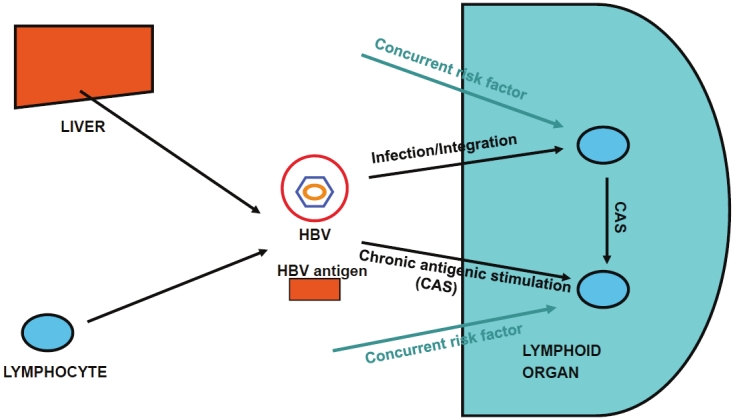Figure 1.

A simplified view of the etiopathogenic role of HBV in lymphomagenesis. HBV particles or HBV antigens can be synthesized and assembled by hepatocytes and, probably, also by lymphocytes. HBV particles can then infect other lymphocytes homing in lymphoid organs. Infection can give rise to other infectious particles or integrate in the host genome, leading to overexpression of cellular oncogenes or downregulation of the expression of tumor suppressor genes. Moreover, HBV antigens can also induce chronic antigenic stimulation (CAS). Infection, integration, and CAS are proposed to be causally linked to lymphomagenesis in concurrence to other as yet undefined risk factors (other lymphotropic viruses, other chronic antigenic stimuli?).
